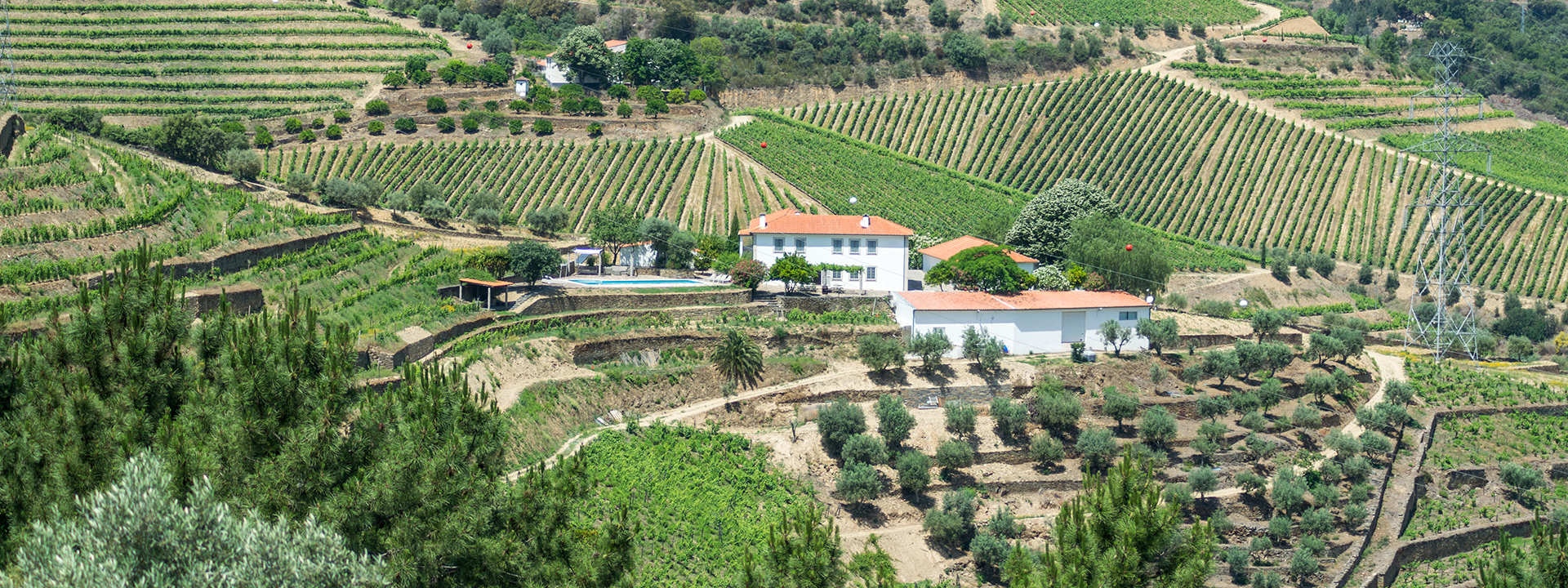Our vines share their habitat with the natural Douro flora. In spring, the terraces are covered with wild flowers- Lavender, Rock Roses, Aniseed, Rosemary, Thyme, Penny Royal, Red Poppies, Sweet Williams. Every 6 years we till the soil, using a horse and plough and we increase the organic content of the soil by spreading our pomace amongst the vines. All this enables the grapes to ripen in a balanced and natural soil. A variety or 'terroirs', facing north, west and east and ranging in elevation between 200m and 100m give the vineyard a complex maturation profile. The various sections of the vineyard were field grafted between 1920 and 1948 and the low yielding vines, which we believe are some of the most ancient grown in the world’s oldest DOC, still flourish on the original stone terraces, fashioned by hand from the steep schistous slopes. The old vines are trained low -Gobolet style- and spur pruned to 2 buds. A traditional mix of Douro varietals have been replanted in areas where yields have ceased and in 2014 on our higher terraces, maintaining a planting density of 5,000 vines per ha.
What makes wine so fascinating is a capacity to express its unique origins and upbringing - "terroir in a bottle". The quality of each successive harvest begins, in large measure, with the seasonal care and attention given to the vines. Annual fieldwork is done by hand, by a small group of experienced workers who return every year to tend to our vines. This continuity is vital in maintaining a high level of viticultural husbandry.
We normally witness Budburst in mid-March and Veraison in late May / early June. Harvest time is usually in early September. All our fruit is harvested by hand into small ventilated boxes and taken to the winery for selection prior to traditional treading in our stone lagares.
Our Wine